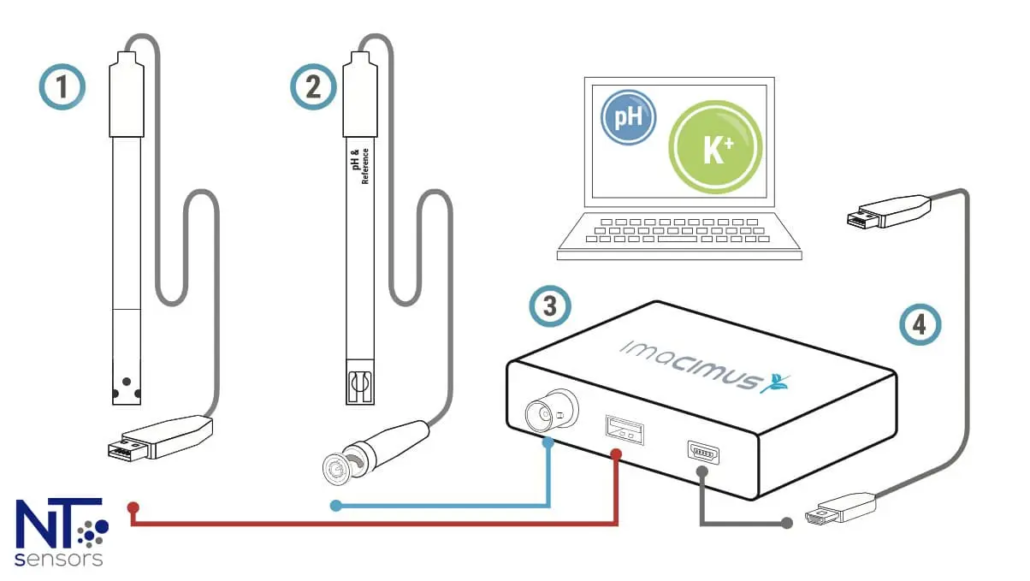Oenological analysis
The importance of measuring nutrients in spirulina
Imacimus K-Vi
Imacimus K-Vi is the fastest and most accurate oenological analysis tool on the market used to measure potassium and pH in wine.
The imacimus K-Vi analysis system allows direct measurement of the exact concentration and potassium in grapes, resulting in rapid analysis and increased reliability.
K-Vi is based on the potentiometric technique of the selective electrode, simple and effective, able to perform analysis in a few seconds simply with a quick calibration, similar to pH measurement.

The impact of potassium levels on wine quality
Potassium levels in wine are crucial to its flavor, aroma, color and shelf life.
Proper potassium management ensures a balanced flavor profile, adequate acidity and wine color stability.
In addition, potassium can influence the formation of aromatic compounds such as esters, which provide fruity and floral notes.
However, high levels of potassium can reduce the stability of wine and shorten its shelf life.
The benefits of using potassium measurements in winemaking
The use of potassium measurements in winemaking can bring several benefits to the industry.
Proper potassium management can help ensure the health of the life and optimum quality of the fruit, resulting in a higher quality end product.
Measuring potassium levels throughout the winemaking process can help identify any potential problems and allow adjustments to be made to ensure that the final product meets the desired quality standards.

Direct measurement of potassium in grapes
- Type: ISE Meter
- No sensors: 1 - Potassium
- Analysis technique: Calibration and direct measurement
- Number of samples: More than 200
- Results: mg/L or mmol/L
- Range: 0/5g/LK+
- Resolution: 0.1g/L K+
- Time per sample: < 2 min Minimum sample volume: 10 mL
- Logging capacity: 100,000 samples
- Power consumption: 5V / 1 A

Simplicity of measurement
The measurement of wine samples with K-Vi is a simple process, which can basically be summarized in 3 steps:
Sample preparation The wine aliquot (5 ml) is taken and 1/4 is made.
The 2-point electrode calibration sensor calibration is calibrated following the software instructions.
Measurements.
The probe is inserted into the sample and in 1 minute you have the result.
You can perform multiple measurements with a single calibration.
Potassium in wine
Wine contains different dissolved salts, especially potassium, calcium, iron and copper salts, among others.
These elements can give rise to instability phenomena, but the most important is due to the potassium cation.
It is capable of forming a bond with tartaric acid to form potassium bitartrate.
Upon reaching a predetermined concentration of potassium bitartrate it can precipitate, leading to a decrease in total acidity and a slight increase in the pH of the wine.
The tartaric stability of wine remains one of the main problems that can affect its marketability.
Consumer demand tends to be for biologically and chemically stable wines.
For this reason, it is essential to monitor the level of potassium in the wine using the most advanced enological analysis tools such as Imacimus K-Vi, to know the bitartrate levels and avoid unwanted precipitation.
Oenological analysis of potassium
It is most commonly used to control precipitation as potassium bitartrate and its technique is the measurement of electrical conductivity.
This electrical technique measures the total ion content in an aqueous sample, and is not able to distinguish each type of ion, resulting in low reliability measurements.
The K-Vi analysis system allows direct measurement of the exact amount of potassium, resulting in a faster and more reliable analysis.
The K-Vi system is based on the simple and efficient selective electrode potentiometric technique, capable of performing analysis in a few seconds with a fast calibration technique and pH measurement.









